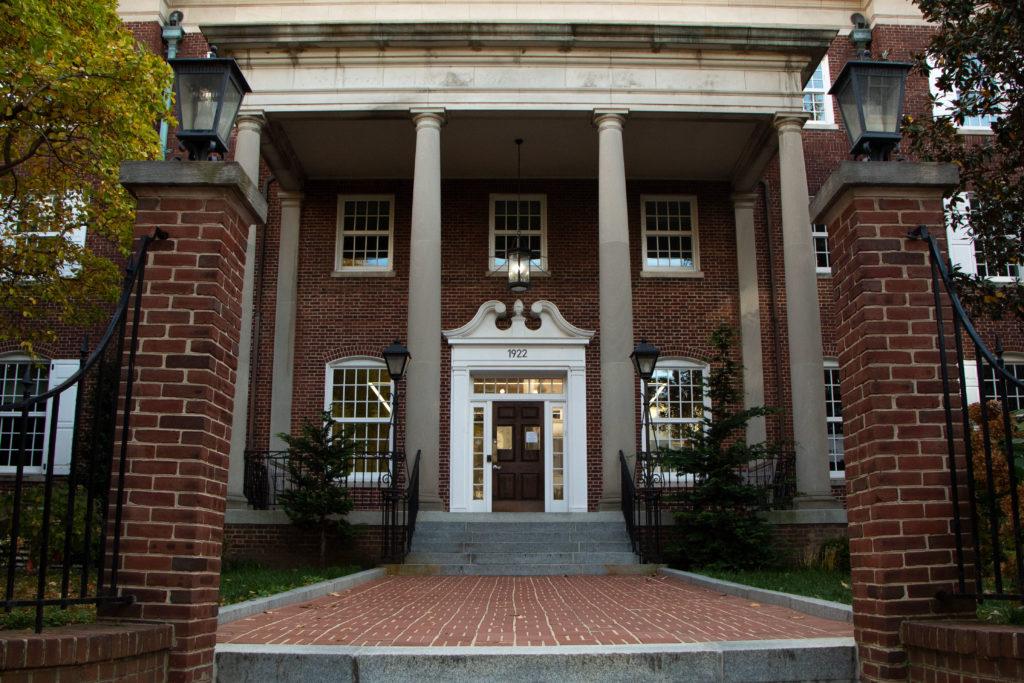Students who rely on the federal government for financial assistance may find themselves both helped and hindered when President Clinton submits his budget to Congress next month.
The president’s budget request is slated to include a provision that will up the federal government’s spending on the nation’s work-study program by $70 million for the 1999-2000 academic year.
But also included is a section that will kill the government’s capital contributions to the federal Perkins loans program – about $135 million this fiscal year – eliminating new federal subsidies to the 30-year-old program of low-interest loans for low-income students.
If passed, the budget provision will not eliminate the Perkins loans program altogether.
Funds for Perkins loans, which are available to students at a lower interest rate than regular bank loans, revolve through the system. The federal government makes its contribution annually and participating colleges grant loans to students using those federal funds and money that has been repaid to the institution by past students.
“It’s a misconception that if this goes through, the program will die,” said Jerry Roschwalb, director of governmental relations for the National Association of State Colleges and Universities. “There is $6 billion already in the program, and it will continue to revolve through the program.”
More than 788,000 students nationwide received Perkins loans this year, and 83 percent of them had family incomes of $30,000 or less.
Sarita Gupta, president of the United States Student Association, said talk has circulated in the higher education community that the Clinton administration is backing down from its plan to cut federal Perkins contributions after the proposal caused a furor among aid advocates.
But Clinton’s budget proposal, touted as the first balanced budget in 30 years, is “still fluid,” according to Ken McInerney, spokesman for the National Association of Student Financial Aid Administrators.
“We’ll get more specifics in the State of the Union next week,” McInerney said. “There is still some back and forth.”
If the president’s plan makes it to Capitol Hill, however, Gupta said her organization and others will encourage legislators not to approve the cuts.
“Our hope is that it won’t get cut,” Gupta said. “But we have a plan if it doesn’t go our way.”
Gupta said the Alliance to Save Student Aid, a coalition of about a dozen education organizations including the USSA, has developed a campaign called “Diplomas Not Debt” to lobby for Congressional education appropriations and the reauthorization of the Higher Education Act, which is slated for this year.
She said that during a national legislative grassroots conference in March, students will lobby members of Congress on issues related to higher education.
“I have no doubt that if the planned cuts do it make it to Congress, students will go in and talk passionately to their legislators about Perkins loans,” Gupta said.
Timothy McDonough, vice president of public affairs for the National Association of Independent Colleges and Universities, said the president’s proposals are “a net loss” since the Perkins loans program and the work-study program do not benefit the same kind of students.
“By eliminating federal contributions to Perkins loans, they are neglecting needy students in favor of middle-class students,” McDonough said.
McDonough said boundaries exist on the work-study program, including limits on hours and types of jobs that count toward a work-study award. But the Perkins loans program targets low-income students who may need more money than a work-study job can provide.
And Perkins loans offer two major benefits – a fixed five percent interest rate and loan forgiveness, which allows students to defer payment if they go into a service job after graduation.
“If someone goes into a low-income community service job after graduation, like teaching or firefighting, the program gives them some forgiveness in paying back the loan,” McDonough said.
Clinton announced last week he will ask Congress to expand the federal work-study program to $900 million, creating positions for 1 million students on almost 3,000 campuses across the nation.
More than $1.6 million in work-study money was granted at GW in the fall of 1996, a fraction of the $25.8 million in federal money that was awarded to GW students that year, according to GW’s Office of Institutional Research.
This year, 1,015 GW students have jobs through the work-study program, according to Jonathan Klonsky, public relations coordinator for the Career Center.
“We’re isolated in our thinking on this campus – we forget that on a smaller campus, work-study is a vital program,” GW College Democrats President Adam Segal said. “GW students can work at the mall or at Au Bon Pain. Students at other schools in small towns can’t do that.”
Segal said work-study money generally is more immediately accessible to students than loan funds.
“Work-study money and Perkins loans ultimately benefit different types of students,” Gupta said.
Despite their disappointment with the possibility of loan cuts, student aid advocates consider the proposed increases in work-study spending a victory.
“We’re obviously very happy about the increased spending for work-study,” Gupta said. “When it’s done right, work-study is a great thing for students, because it can give them a chance to work in a field that they might want to go into someday.”
Until the administration releases its budget within the next few weeks, provisions are not set in stone. But Roschwalb said he does not expect the president’s requests to be contested on the Hill.
“I don’t think the administration is looking for fights,” he said. He said funds for the education programs are only a drop in the federal budget bucket.







